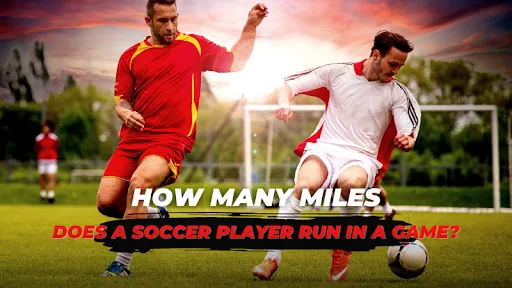How many miles does a soccer player run in a game? This is an issue that many readers wonder about and want to learn about. Soccer players, whether they’re darting across the field or holding their position, cover significant distances during a match. Xoi Lac TV will explore how much ground soccer players typically cover within the span of a 90-minute game.
How many miles does a soccer player run?
At home, watching a soccer match on television from here will be different from when you’re actually on the field – participating in a full 90-minute game. It transforms into an arduous physical challenge. The distance covered by a soccer player during a match can be affected by numerous variables, but as a general guideline, outfield players typically cover approximately 6-7 miles of ground.
Currently, many tournaments are being organized, you can watch the match to verify the information. Tournament schedules are updated on Xoilac TV. In addition to the match schedule, you can also update match results (kết quả bóng đá) from this website.
Goalkeepers: As expected, goalkeepers cover the least distance during a soccer match. Their primary duty is to protect the goal, and they rarely venture far from their penalty area. Even in the modern game, where goalkeepers have a more active role in team attacks, they seldom exceed 2 miles of running in a 90-minute match.
Center Backs: Like goalkeepers, center-backs don’t log extensive mileage during a match. They serve as defensive anchors but might move forward during set-piece situations like corner kicks or free-kicks. Typically, a center-back’s distance covered averages around 5 miles in a competitive match. Nonetheless, this figure is subject to variation based on the quality of the opposing team they encounter.
Full Backs: Full backs, positioned on the sides of the center backs, have varying running distances based on their team’s tactical approach. Some managers deploy them as attacking wingers, while others keep them deep in defensive positions. Defensive fullbacks might cover a distance similar to center backs (5-6 miles) while attacking fullbacks can surpass 7 miles.
In a soccer match, central midfielders assume an important and dynamic situation. Defensive midfielders are often the linchpin, offering support to the defense before orchestrating attacks. Conversely, the more offensive-minded midfielders, typified by the likes of Zinedine Zidane, specialize in crafting opportunities and keeping the opposition’s goal under constant threat.
Consequently, the distance covered by central midfielders can vary considerably. Typically, A soccer player covers approximately 7 miles in a single game, their status as some of the most prolific long-distance runners on the soccer field.
Wingers: Wingers operate in both midfield and attack, dedicating less time to defensive duties and more to challenging the opposition’s goal. They generally cover slightly less ground than other midfielders but more than some defenders. You can anticipate wingers running approximately 5-6 miles during a match, with variances influenced by their team’s performance and attacking style.
Forwards: Forwards play a pivotal role in soccer’s offensive efforts, frequently stationed far from their own goal, relentlessly aiming to breach the opposing defense while evading the offside trap. The distance they cover is contingent on their team’s tactics and ball possession. Aggressive teams employing long balls to their strikers may demand more running, while possession-oriented teams might require less. On average, strikers run around 5-6 miles in highly competitive soccer matches.
In summary, the distance covered by soccer players is subject to their positions, team strategies, and the dynamics of the game. While some players traverse more ground than others, their collective effort creates the captivating and dynamic sport of soccer, beloved by fans across the globe, whether as spectators or active participants.








